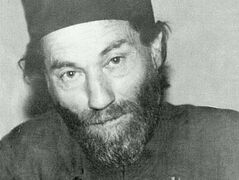Piteşti, Argeș County, Romania, July 20, 2023
 A cell in Piteşti Prison. Photo: pravoslavie.ru
A cell in Piteşti Prison. Photo: pravoslavie.ru
Piteşti Prison of communist Romania was home to unspeakable horrors, where thousands suffered for their faith in Christ and political dissension.
Now the penitentiary complex has been officially designated as an historical monument. The relevant order was signed by Romanian Minister of Culture Raluca Turcan on Wednesday, reports the Basilica News Agency.
“The prison in Piteşti is a painful memory, but also a testimony of the strength of the human spirit to resist and resist oppression. The closing of the Piteşti Penitentiary is a particularly important moment in trying to raise awareness and recover the recent history of Romania,” Turcan said.
The prison in Pitesti, in its current form, was built between 1937-1941 and functioned as a penitentiary until 1977. It is especially known for the reeducation experiment conducted between December 1949 and September 1951 designed to violently “reeducate” the prisoners, including destroying their faith in Christ, altering their personalities to the point of absolute obedience.
French historian François Furet, considered Piteşti “one of the most terrible dehumanization experiences our age has ever known.” Alexander Solzhenitsyn, having himself suffered in the Russian gulag system, described the Romanian prison as “the most terrible act of barbarism in the contemporary world.”
Among those who suffered in Piteşti were Fr. Roman Braga, Fr. Gheorge Calciu, both of whom ended their days in America, and Valerian Gafencu.
Recognizing the prison as an historical monument makes it a symbol of anti-communism, the Minister of Culture added:
The story of the Piteşti Prison and the Piteşti experiment helps to honor the victims and the courage of those who fought against the injustices of the communist regime. Also, the recognition of the prison as a historical monument reconfirms its position as a symbol of the fight against communist oppression in Romania and a symbol of the protection of democratic values.
A museum opened at Piteşti in 2014, with weekly services held in the attached chapel, where the martyrs of the prison are commemorated.
In March 2021, construction began on a new church at the prison.
Learn more about Piteşti in the article, “To Hell and Back: Piteşti, Târgu Ocna, and Again Aiud. The Life of Ioan Ianolide, Who Spent Twenty-Three Years in Prison for Christ.”
Follow OrthoChristian on Twitter, Vkontakte, Telegram, WhatsApp, MeWe, and Gab!



